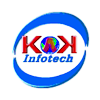Web 2.0 Development
The term Web 2.0 is associated with web applications that facilitate participatory information sharing, interoperability, user-centered design, and collaboration on the World Wide Web.
KIPL facilitates clients to get updated with newest technology which is most important and demanding nowadays on technology front.
A Web 2.0 site allows users to interact and collaborate with each other in a social media dialogue as creators (producers) of user-generated content in a virtual community, in contrast to websites where users (consumers) are limited to the passive viewing of content that was created for them.
Web 2.0 can be described in 3 parts which are as follows:
- Rich Internet Application (RIA) – It defines the experience brought from desktop to browser whether it is from a graphical point of view or usability point of view. Some buzz words related to RIA are AJAX and Flash.
- Service-oriented Architecture (SOA) – It is a key piece in Web 2.0 which defines how Web 2.0 applications expose its functionality so that other applications can leverage and integrate the functionality providing a set of much richer applications (Examples are: Feeds, RSS, Web Services, Mash-ups)
- Social Web – It defines how Web 2.0 tend to interact much more with the end user and making the end user an integral part.
Web 2.0 websites include the following features and techniques:
Search
Finding information through keyword search.
Links
Connects information together into a meaningful information ecosystem using the model of the Web, and provides low-barrier social tools.
Authoring
The ability to create and update content leads to the collaborative work of many rather than just a few web authors. In wikis, users may extend, undo and redo each other’s work. In blogs, posts and the comments of individuals build up over time.
Tags
Categorization of content by users adding “tags” – short, usually one-word descriptions – to facilitate searching, without dependence on pre-made categories. Collections of tags created by many users within a single system may be referred to as “folksonomies” (i.e., folk taxonomies).
Extensions
Software that makes the Web an application platform as well as a document server. These include software like Adobe Reader, Adobe Flash player, Microsoft Silverlight, ActiveX, Oracle Java, Quicktime, Windows Media, etc.
Signals
The use of syndication technology such as RSS to notify users of content changes.

